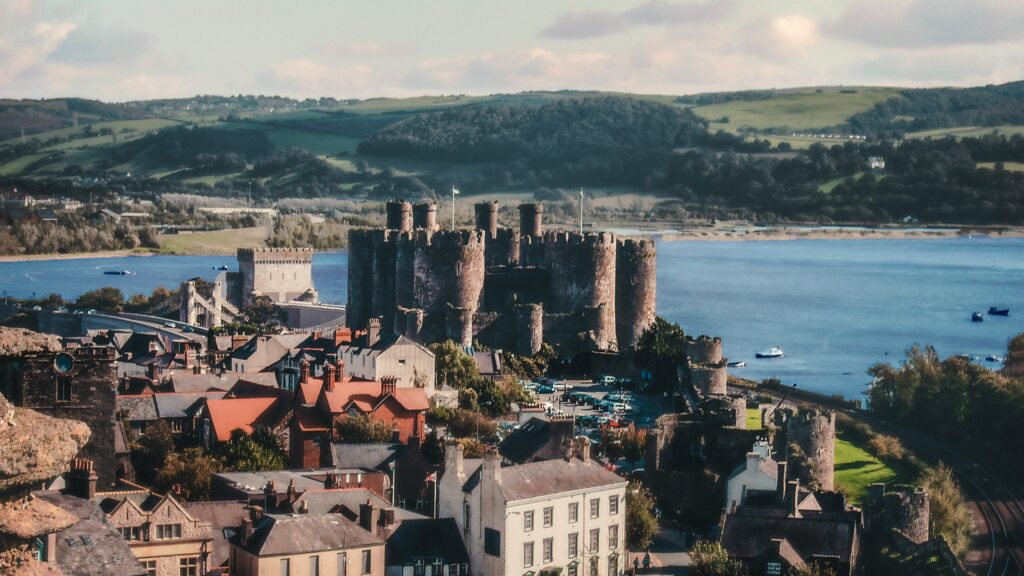Derek Jones ponders the future of Wales’s small towns in a world dominated by conurbations
One fifth of Europeans live in towns with a population of less than 10,000. North and mid Wales are particularly well represented in this statistic: Denbigh (8,763), Dolgellau (2,678), Knighton (3,901), Llanfyllin (1,407), Llanwrst (3,037), Machynlleth (2,147), Mold (9,568), Presteigne (2,190), Ruthin (5,218), and Welshpool (6,269). They are unquestionably towns, not villages. Some of them punch well above their weight, supporting services which would elsewhere be provided in places with populations running into tens of thousands. Mold and Ruthin are county towns while Welshpool houses one of the biggest cattle markets in Europe. All of them are historically and culturally important. Small towns are an essential part of the nature and character of Wales. What is their future in a world dominated by large conurbations?
That was the question implicit at the launch of two new initiatives just launched in Ruthin. Both are broadly concerned with issues of design and incremental change to the physical structure of the town. Ruthin: Market Town of the Future aims to produce a long-term, masterplan, drawn up by local people, against which any official or unplanned future developments should be judged. The second, the Ruthin Art Trail Project is a specific proposal for the immediate embellishment of the townscape.
These may be surprising subjects at this particular moment, when it might have been expected that the closure of small shops and other threats to the economy of small towns would have been at the forefront of local minds. Nevertheless, they are sensible because no magic wand will reverse fundamental changes which started long before the recession was under way. It is surely better to look beyond the boarded up shops and consider how a town with fewer shops might still be an enjoyable and stimulating experience.
By happy chance Gavin Harris, this year’s mayor of Ruthin this year, is a trained architect as well as the owner of a successful boutique hotel in town. He has managed to gain the interest of his former teacher, Wayne Forster, head of the Design Research Unit Wales and deputy head of the Welsh School of Architecture at Cardiff University in these projects. For they provide an opportunity to open the eyes of students to the architectural opportunities presented by small town as well as stimulating the people of one of those towns, Ruthin, to look freshly at a familiar townscape.
During the next few weeks, students will be on site studying ‘the reasons for Ruthin’ (its position on the river Clwyd and below the Clwydian Hills), considering its evolution and noting how land has been used in history and today. They will also examine how well the town works. How easy is it to move from one part of the town to another? Does the town provide safe opportunities for meeting and conviviality – for outdoor performances and festivals? Does through traffic help or hinder a sense of urbanity and incident? Are there black spots or vacant spaces which could be put to better use?
“We are architects,” says Wayne Forster, “we help to make places”. The next step will be to share the students’ impressions of the town with its people, to listen to their ideas, and, together with them, to suggest improvements. before, following community design workshops and further debates, it Following that it should be possible to write a masterplan which genuinely belongs to the people. It would be surprising if the town square, considered on all sides to be lacking in ‘presence’, despite containing some fine buildings and attractive shop fronts, did not feature strongly. But Forster wouldn’t be surprised if taken-for-granted details like pavements and street lights also play an important part.
His mention of pavements led on naturally to Michael Nixon’s introduction of the idea of a Ruthin Art Trail. Already, as is well known, Ruthin is home to an internationally acclaimed Craft Centre. Situated on the edge of the town centre but separated from it by a busy road and roundabout, it is constantly challenged to overcome these physical disadvantages. to relate as well to the people on its doorstep as to hundred thousand-odd visitors it attracts to its exhibitions each year. MN Arts Associates, who were closely involved in the promotion of the re-developed Craft Centre, have stayed involved and seem implicitly to be suggesting that art does not need to be narrowly defined or confined within the walls of specially designated buildings, however architecturally splendid.
“Pavements can give you delight,” proclaimed Michael Nixon. At the same time he includes more mundane features as possible components of an art trail. These include manhole covers whose Victorian embellishments can be highlighted to great effect, and seating which need not be ‘out of the catalogue’ but can be specially designed to enrich the enjoyment of a street or square.
As might be expected, an art trail is likely to incorporate sculpture. Yet, not for nothing does the strapline of the Craft Centre read, ‘The Centre for the Applied Arts’. MN Arts Associates believe that grants will be available to finance a competition, which would allow the winners to initiate the Arts Trail during the next twelve months.
The improvement of a townscape, involving architects, designers and artists in this is not new, but, so far I am aware, has not often taken place in towns of this size. Of course, hey have often been subjected to apparently well meaning attempts by councils to ‘listen to people’, an experience which has sometimes left participants wondering what happened to their ideas.
Ruthin: Market Town of the Future aims to help Ruthin people make their own masterplan. Doubtless its progenitors will find it a particular challenge to maintain interest over, say, five years if there are not much to show for it on the ground. Paradoxically, the Arts Trail, which, so far as I am aware, did not originate from discussion in the community, is likely to provoke discussion and controversy in ways that will be grist to Market Town of the Future’s mill. Maybe the next step will be talking over these questions with other small towns across Wales to find out what can be learned from them.
An IWA conference on New Life for Town Centres: Unique Paces for Regeneration is being held in Ystrad Mynach on Thursday 24 June. Click here for programme details and a booking form.





